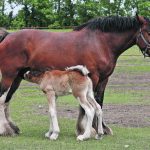Once the mainstay of prairie agriculture, draft horses are now much less common. The most familiar breeds on the Prairies include Belgiums, Percheron, Clydesdales and Shires. Horses, including draft breeds — and also thoroughbreds — can suffer from a disorder of the larynx. Nerve damage inactivates the muscle that normally opens and closes the left […] Read more
Tag Archives Animal Health column

Where does your herd rank among cow-calf benchmarks?
Productivity and health data in cow-calf herds is recorded in a variety of ways; everything from sophisticated software programs and spreadsheets to the traditional calving book that may get filed in a drawer once the calves are weaned. However, we know that keeping and evaluating herd data can help you make better long-term decisions and […] Read more
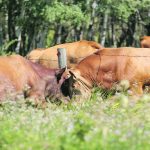
Advances in sexed semen positive for cattle industry
Advances in the production of sexed semen have opened many doors in dairy and beef cattle production. It is another way producers can fine tune their management to potentially get higher returns. For many years, the dairy sector has focused on using sexed semen for heifers and top-end cows, the cows from which producers want […] Read more
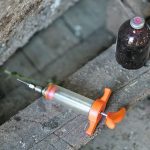
Producers should ask their vets about new medications
With global supply issues, manufacturing issues and transportation or distribution issues, the words “back order” can strike fear in the hearts of producers and veterinarians. The bigger a herd becomes, the more critical that veterinary product shortages become, so it’s critical to keep potential solutions in mind. Keeping an open line of communication with the […] Read more
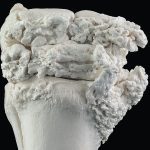
Prompt action needed to alter joint disease trajectory
Joints are an essential component of the musculoskeletal system, bringing motion to what would otherwise be a rigid system of bones. And of course, it is the combination of bones, joints and muscles that scaffold the body’s organs and allows movement. Healthy joint cartilage requires frequent movement. Compressive forces squeeze joint fluid out of the […] Read more

Studies show vaccine delivery method makes difference
I’m often asked if there is one vaccine preferred or better than other vaccines. My usual response is that it is difficult to compare vaccines because we rarely have enough good research to prove whether there are significant differences between vaccines. Such studies are difficult and expensive to perform and often we are pleased if […] Read more
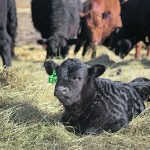
Survey participation has long-term benefits for industry
I encourage all producers to share their knowledge with cattle associations, researchers and related professional organizations because positive results are eventually returned. Accurate data going in leads to accurate data coming out. We may be inundated with surveys and questionnaires from industry groups but their ultimate goal is to gather information that will inform producers […] Read more

Possible drought this summer may increase anthrax risk
Limited snowpack this winter combined with low precipitation in previous years has raised the alarm for severe drought conditions on the Prairies this summer. One of the more serious diseases to arise in these challenging weather conditions is anthrax. Caused by the bacterium Bacillus anthracis, anthrax is an ancient and global disease. The earliest references […] Read more
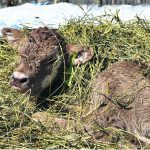
Uterine prolapse serious and requires prompt attention
Uterine prolapse is one of the true emergencies in food animal veterinary medicine. This condition is relatively rare. Estimates suggest that approximately two cows in every 1,000 calvings will have a uterine prolapse. However, it is a serious life-threatening condition for the animal and prompt action is required. If the cow is straining badly after […] Read more
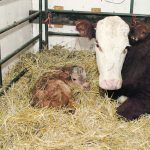
Monitoring first weeks of life will help ensure calf health
Paying close attention to calf health in the first week of life will decrease mortality and increase growth and returns to cow-calf producers. When we think about prevention of calf mortality, three main things come to mind, and I hope this review will eliminate the need for more calf treatments. For scours, the biggest factor […] Read more

